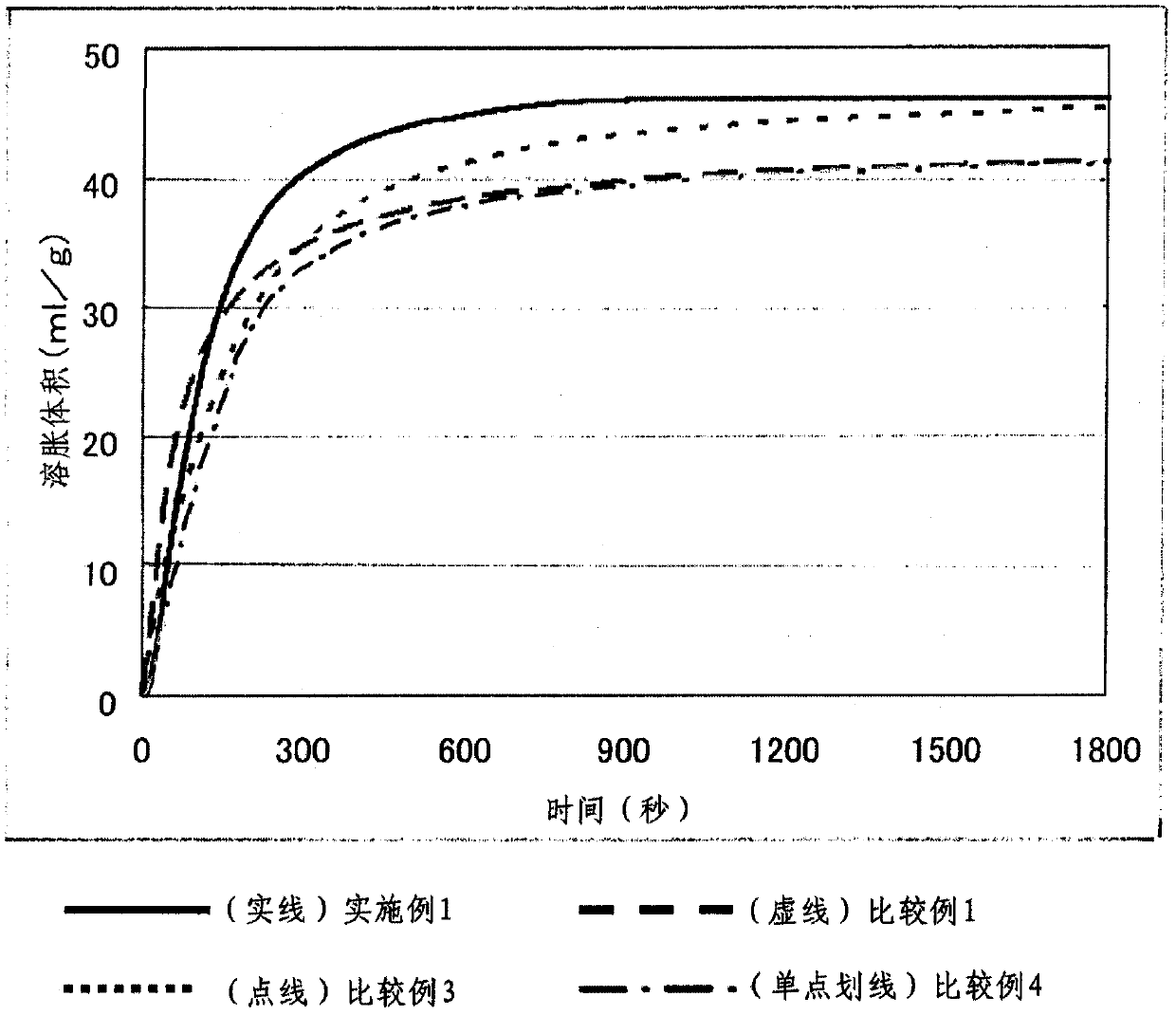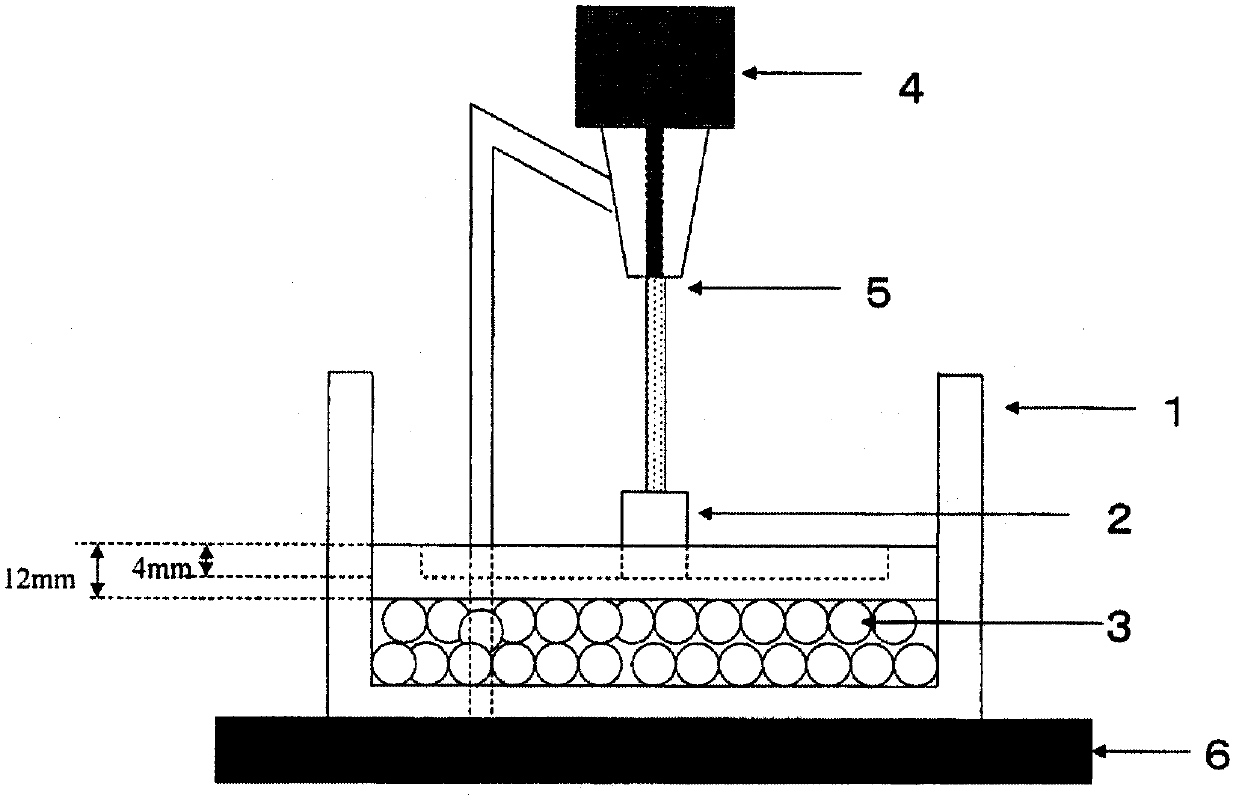Absorbing resin particles, process for producing same, and absorbent and absorbing article both including same
A technology of resin particles and absorbency, which is applied in absorbent pads, medical science, bandages, etc. It can solve the problems of easy contact dermatitis and inability to completely absorb liquids, etc., and achieve the effect of small absorption rate deviation and excellent absorption performance
- Summary
- Abstract
- Description
- Claims
- Application Information
AI Technical Summary
Problems solved by technology
Method used
Image
Examples
Embodiment 1
[0194] 155 parts (2.15 parts by mole) of the water-soluble vinyl monomer (a1-1) {acrylic acid, manufactured by Mitsubishi Chemical Corporation, with a purity of 100%}, 0.6225 parts (0.0024 parts by mole) of the crosslinking agent (b1){ Pentaerythritol triallyl ether, manufactured by Daiso Co., Ltd.} and 340.27 parts of deionized water were kept at 3° C. while being stirred and mixed. Nitrogen was passed into the mixture so that the amount of dissolved oxygen was 1 ppm or less, and then 0.62 parts of 1% hydrogen peroxide aqueous solution, 1.1625 parts of 2% ascorbic acid aqueous solution, and 2.325 parts of 2% 2,2'-isocyanate were added and mixed. Nitrobis[2-methyl-N-(2-hydroxyethyl)-propionamide] aqueous solution to start polymerization. After the temperature of the mixture reached 90°C, it was polymerized at 90±2°C for about 5 hours, thereby obtaining a hydrogel (1).
[0195]Then, while 502.27 parts of this hydrogel (1) was minced with a mincer (12VR-400K manufactured by ROYA...
Embodiment 2
[0197] Except that "1.9 parts of hydrophobic substance (C-1)" is changed to "1.9 parts of hydrophobic substance (C-2) {calcium stearate}", other manufactures obtain the present invention in the same manner as in Example 1 absorbent resin particles (2). The weight average particle diameter of the absorbent resin particles (2) was 390 μm, and the apparent density was 0.58 g / ml. In addition, 0.985% of the hydrophobic substance (C) exists inside the absorbent resin particle (2), and 0.015% of the hydrophobic substance (C) exists on the surface of the absorbent resin particle (2).
Embodiment 3
[0199] Except that "1.9 parts of hydrophobic substance (C-1)" was changed to "1.9 parts of hydrophobic substance (C-3) {zinc stearate}", this product was obtained in the same manner as in Example 1. Inventive absorbent resin particles (3). The weight average particle diameter of the absorbent resin particles (3) was 400 μm, and the apparent density was 0.58 g / ml. In addition, 0.970% of the hydrophobic substance (C) exists inside the absorbent resin particle (3), and 0.030% of the hydrophobic substance (C) exists on the surface of the absorbent resin particle (3).
PUM
| Property | Measurement | Unit |
|---|---|---|
| radius | aaaaa | aaaaa |
| thickness | aaaaa | aaaaa |
| depth | aaaaa | aaaaa |
Abstract
Description
Claims
Application Information
 Login to View More
Login to View More - R&D
- Intellectual Property
- Life Sciences
- Materials
- Tech Scout
- Unparalleled Data Quality
- Higher Quality Content
- 60% Fewer Hallucinations
Browse by: Latest US Patents, China's latest patents, Technical Efficacy Thesaurus, Application Domain, Technology Topic, Popular Technical Reports.
© 2025 PatSnap. All rights reserved.Legal|Privacy policy|Modern Slavery Act Transparency Statement|Sitemap|About US| Contact US: help@patsnap.com



